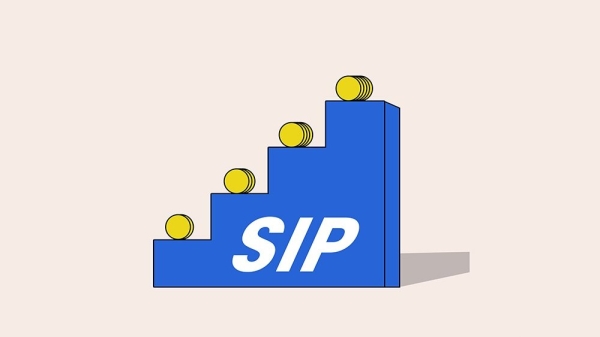Types Of SIPs: What are the Different Types of SIP Plans in India?
Likewise, in case of a financial crunch, you can reduce the SIP amount and increase it if you have more funds available. With flexible SIPs, the investor has th
- by B2B Desk 2023-07-25 07:25:17
SIPs or Systematic Investment Plans are one of the most requested ways by investors to invest systematically and steadily over the long term. Investors in India prefer to invest in mutual funds through SIP. However, investors are aware of only one type of SIP which comes in its simplest form. To meet the investment needs of investors, fund houses have now introduced different SIP variations.
A systematic Investment Plan, or SIP, helps you start your investment journey with a small amount. With most funds, the minimum investment amount is only Rs. 500/month. But while people who want to invest in mutual funds know the basics of SIPs, most of them are not aware of the different types of SIPs available today. Have a look at some of the popular SIP types in this blog.

The four most common types of SIP
Fund houses have introduced multiple SIP variations to suit all different types of investors. Some of the most popular options are:
Flexible SIPs
Also known as Flex SIP or Flexi SIP, it allows you to adjust the amount of SIP based on your financial and market conditions. There is a pre-decided formula regarding market conditions, which allows investors to invest more when markets are down and seek a smaller SIP amount when markets are up.
Likewise, in case of a financial crunch, you can reduce the SIP amount and increase it if you have more funds available. With flexible SIPs, the investor has the option to adjust the amount as required.
Step-Up SIP
Step-up or top-up SIP allows you to increase the amount of SIP at fixed intervals. For example, you can start investing with Rs 10,000 SIP in a mutual fund scheme of your choice and instruct the fund house to increase the SIP amount by Rs. 1000 after every six months.
As per his request, after the first six months investment of Rs. 10,000/month, the SIP amount will be increased to Rs 11000/month. It will increase again by Rs 1,000/month from the 13th month. Step-up SIP can be a great option for salaried employees who expect a raise soon.
Perpetual SIP
Perpetual SIP is one of the best options out there on the systematic investment spectrum because it is linked to all SIP investors. When starting a SIP, the SIP mandate requires you to mention the start and end date of the SIP. While investors usually mention a start date, most don't fill in an end date.
Every SIP without an end date mentioned in the mandate becomes a permanent SIP, which is considered valid until the year 2099. However, you have the option to stop the SIP by submitting a written application to Finance House. If you only want to invest against a fixed contract, be sure to also enter the SIP end date as well.
Trigger SIP
With Trigger SIP you can set a trigger for your SIP investment. For example, you can indicate that your SIP amount should be withdrawn from your bank account and used to purchase units of the specified system only if the net asset value (NAV) of the system drops to a certain level.
You can get other launch options like specific dates and even levels from an index like Nifty or Sensex. However, this option is only recommended for experienced investors who have the knowledge and experience to effectively tune out such triggers.
Conclusion
There are several types of SIP plans for investors that can allow them to achieve specific financial goals. While all investors can go with a basic SIP, you can consider one of the above options if it fits your financial and investment needs. However, you must ensure that you thoroughly understand how a particular SIP works so that your selection can deliver the expected results.
Also Read: X.com to go live today? Elon Musk says 'if there is good enough logo...'

POPULAR POSTS
Best Silver Investment Platforms for 2025: From CFDs to Digital Vaults Explained
by Shan, 2025-10-23 12:22:46
Best Investment Plans in India for 2025: A Complete Guide to Grow and Protect Your Wealth
by Shan, 2025-09-18 10:20:46
Which venture capital firms are the most active in funding Indian startups in 2025
by Shan, 2025-08-06 10:42:11
Top 5 Apps to Buy Digital Gold in India (2025): Safe, Simple & Secure
by Shan, 2025-08-01 10:24:51
10 Highest Dividend Yield Stocks in August 2025
by Shan, 2025-07-28 09:31:02
Exchange-Traded Fund (ETF): A Practical Guide to Smart Investing
by Anmol Chitransh, 2025-04-17 10:18:20
The Ultimate Guide to Commodity Trading: Strategies, Risks, and Opportunities
by Anmol Chitransh, 2025-04-02 07:06:01
RECENTLY PUBLISHED

Loan EMIs to Drop as RBI Slashes Repo Rate - Full MPC December 2025 Highlights
- by Shan, 2025-12-05 11:49:44

The Agentic Revolution: Why Salesforce Is Betting Its Future on AI Agents
- by Shan, 2025-11-05 10:29:23

Pine Labs IPO 2025: Listing Date, Grey Market Premium, and Expert Outlook
- by Shan, 2025-11-05 09:57:07

Top 10 Insurance Companies in India 2026: Life, Health, and General Insurance Leaders Explained
- by Shan, 2025-10-30 10:06:42

OpenAI Offers ChatGPT Go Free in India: What’s Behind This Big AI Giveaway?
- by Shan, 2025-10-28 12:19:11





 Subscribe now
Subscribe now 